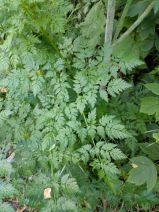|
Calflora provides a specialized mapping platform for plant locations as a public service.
This platform consists of 1. a geospatial database, and 2. a set of web applications and phone applications.
There are many ways to get data into the database.
Data can be extracted from the database in several formats.
The web applications provide many ways to visualize the data.
While originally developed to track native plant populations,
the platform has also been used to advantage to track non-native populations.
The California Invasive Plant Council (Cal-IPC)
and other organizations engaged in weed management
have used Calflora's platform
to collect and map weed data across California since 2008.
This page describes the ongoing effort.
If you are interested in participating, either by contributing
weed observations or by monitioring weed observations contributed by others, read on.
Note that most Calflora tools can be used without charge, including
support by email and phone.
For more information, please
contact Calflora support.
|
